As someone deeply invested in NLP development, I’ve witnessed the evolution of language models and their transformative impact on how we interact with data and build intelligent systems. With Retrieval-Augmented Generation (RAG) emerging as a powerful paradigm, many are asking: is fine-tuning large language models (LLMs) still necessary, or is RAG making it obsolete?
The answer, like much in NLP, is nuanced. Let’s break it down.
What Is RAG, and Why the Buzz?
RAG combines two components: a retriever that fetches relevant documents or knowledge from an external database, and a generator (typically a pre-trained LLM) that uses this retrieved information to generate responses. It’s a two-step process:
- Retrieve: The system queries an external knowledge base to find relevant information.
- Generate: The retrieved context is passed to the LLM, which uses it to produce an output.
The key innovation? RAG allows models to dynamically tap into external sources of knowledge rather than embedding all knowledge within the model itself. This has opened up new opportunities but also raised questions about when fine-tuning is still the better approach.
RAG vs. Fine-Tuning: Key Differences
Cost
- RAG: You avoid the high computational cost of fine-tuning by relying on an external retriever and a pre-trained LLM. However, building and maintaining a high-quality retriever (e.g., using vector databases like Pinecone or Weaviate) can involve upfront investment.
- Fine-Tuning (FT): Fine-tuning large models, especially modern giants like GPT-4 or LLaMA, is resource-intensive. Training runs are costly in terms of GPU/TPU hours, and even hosted fine-tuning options can be expensive.
Example: A customer service chatbot requiring frequent updates to its knowledge base benefits more from RAG. For static tasks like sentiment analysis, fine-tuning is often a one-time cost that yields consistent performance.
Accuracy
- RAG: Performance heavily depends on the quality of the retrieval system and the database. If the retriever fetches irrelevant or incomplete documents, the generator will struggle.
- FT: Fine-tuned models can be highly optimized for specific tasks, often outperforming RAG for narrowly defined use cases with fixed datasets.
Example: A legal assistant analyzing contracts may need precise and nuanced domain-specific understanding. Fine-tuning ensures the model handles legal language effectively. In contrast, RAG excels in answering diverse questions where external references are available.
Latency
- RAG: The retrieval step introduces additional latency, which may be problematic for real-time applications.
- FT: Since fine-tuned models don’t rely on retrieval, they tend to respond faster.
Example: A virtual assistant requiring instantaneous responses may favor a fine-tuned model, while a research assistant querying detailed references can afford the retrieval latency of RAG.
Privacy
- RAG: Using an external retriever could pose privacy risks if sensitive data is included in the queries or the database. However, self-hosted retrieval systems can mitigate this risk.
- FT: Fine-tuning on private datasets ensures that sensitive information remains internal to the model and infrastructure.
Example: Healthcare applications often require fine-tuning because patient data must remain secure and compliant with regulations like HIPAA.
Scalability and Maintenance
- RAG: Easily scales with updates to the knowledge base. No need to re-train the model when new data is added.
- FT: Requires re-fine-tuning whenever new knowledge needs to be incorporated, which can be costly and slow.
Example: A news aggregation bot that must stay current with breaking stories is better suited to RAG. A product classification model, on the other hand, benefits from fine-tuning for stability.
Use Case Analysis: When RAG Shines vs. Fine-Tuning
When RAG Is Better
- Dynamic Knowledge Needs:
- Chatbots for customer service or research assistants where the knowledge base evolves.
- Example: A financial assistant that retrieves live stock market data.
- Broad Domain Applications:
- Tasks spanning multiple domains where embedding all knowledge into the model isn’t feasible.
- Example: A general-purpose Q&A bot accessing Wikipedia or company knowledge bases.
- Frequent Updates:
- Scenarios where the knowledge base changes frequently.
- Example: E-commerce bots fetching product details from a live inventory.
When Fine-Tuning Excels
- Task-Specific Applications:
- Narrow tasks requiring precise outputs.
- Example: Sentiment analysis or fraud detection models fine-tuned on labeled data.
- Privacy and Security:
- Environments with strict privacy requirements.
- Example: Healthcare diagnostics trained on patient records.
- Real-Time Requirements:
- Tasks where latency is critical.
- Example: Virtual assistants like Siri or Alexa that prioritize speed.
Considerations for LLM Selection and Orchestration Frameworks
Choosing the Right LLM
- Open-Source vs. Proprietary:
- Open-source models like LLaMA or Falcon are cost-effective and customizable but may require more setup.
- Proprietary models like OpenAI’s GPT-4 offer advanced capabilities and ease of integration but come with licensing costs.
- Model Size:
- Larger models (e.g., GPT-4) may perform better in RAG setups due to their generalization ability.
- Smaller models fine-tuned for specific tasks can outperform larger pre-trained models.
Orchestration Frameworks
- Tools like LangChain, Haystack, and LlamaIndex simplify the implementation of RAG by providing components for retrieval, generation, and chaining.
- These frameworks also support advanced features like memory management and query optimization.
Example: For a document Q&A bot, LangChain’s integration with vector databases enables seamless retrieval and generation workflows.
The Verdict: Complementary, Not Competitive
RAG isn’t making fine-tuning obsolete—it’s offering a complementary approach that shines in scenarios demanding dynamic, real-time, or diverse knowledge access. Fine-tuning remains indispensable for specialized, latency-sensitive, and privacy-critical applications.
The decision boils down to:
- Dynamic vs. Static Knowledge Needs
- Latency vs. Accuracy Trade-offs
- Cost and Maintenance Considerations
For many projects, a hybrid approach may deliver the best of both worlds. For example, a fine-tuned model could handle sensitive or real-time queries, while RAG enriches it with external knowledge for broader tasks.
As NLP practitioners, we’re fortunate to have both options in our toolbox. The future of language models lies not in choosing one over the other but in strategically leveraging both to meet the unique demands of our applications.
